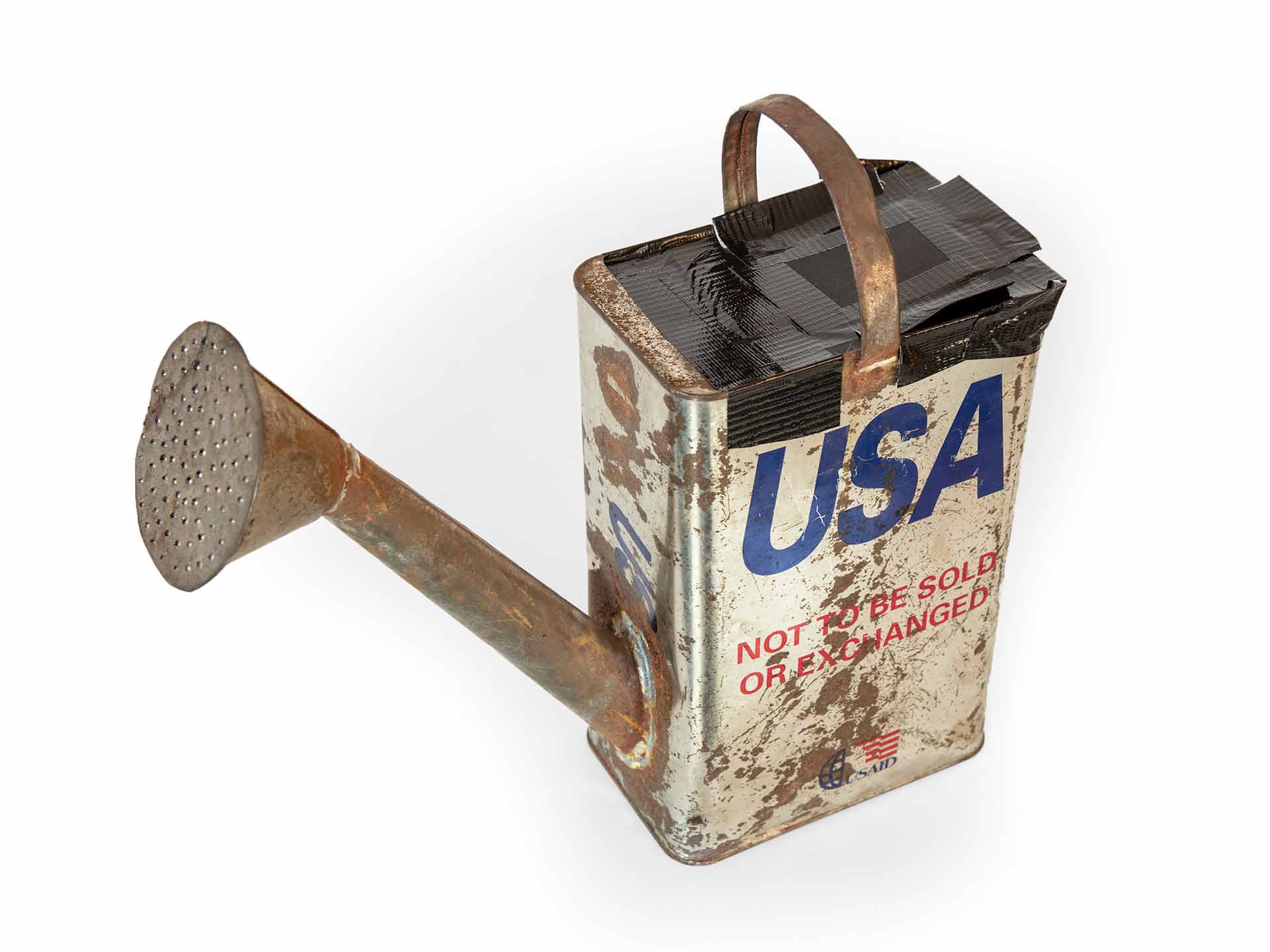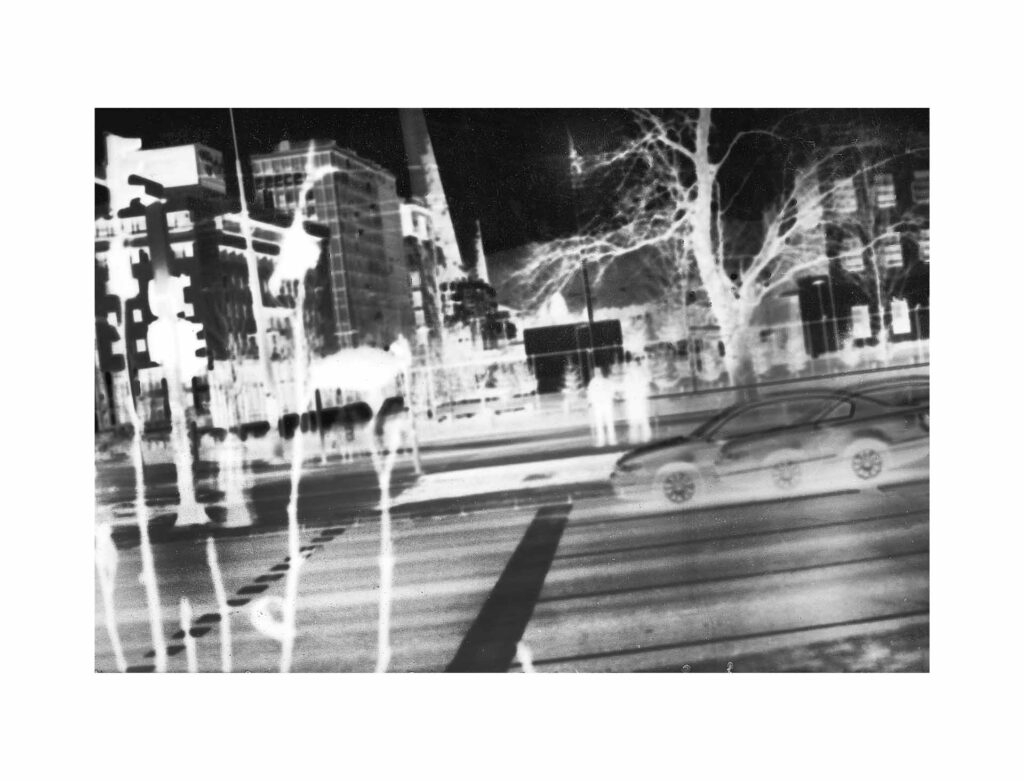Witness Objects
Military helmet modified into pinhole camera. Pinhole aperture adapted from a bullet hole.
Luke Watson / Witness Objects, Bosnia and Herzegovina
‘Sarajevo Under Seige’ is one of the permanent exhibitions at The History Museum of Bosnia and Herzegovina that tells stories of the persistence, resourcefulness, and creativity of the citizens of Sarajevo as people survived without electricity, water, and heating during the longest siege of a capital city in the history of modern warfare. The exhibition tells stories about daily life during the 1335-day siege through handmade objects, documents, and photographs donated by citizens to the museum. Objects include improvised lamps, water carts, and stoves made from oil cans. The History Museum has been collaborating with national and international artists and providing them with access to their archives to encourage creative dialogue and engagement with Bosnia’s different histories. Luke Watson, a British photographer who was engaging with the museum through a UK Arts and Humanities Research Council research project called Art and Reconciliation, suggested that they could make pinhole cameras from some of the objects in the siege collection. The museum’s assistant photography curator Tijana Krizanovic agreed.

Sniper Alley
Image made with Helmet Camera depicting high-rise building from the notorious ‘Sniper Alley.’
© Luke Watson / Witness Objects, Bosnia and Herzegovina
In December 2018, Watson led a series of pinhole photography workshops with students from Sarajevo’s Technical School of Graphic Design and Multimedia Technology. Watson subscribes to a form of slow photography that recognises that authentic and meaningful processes need to play out over time. Using museum objects as pinhole cameras allows young people who were not alive at the time of the siege to engage indirectly but actively with a complex and challenging part of their history.
Working alongside Krizanovic, they made basic pinhole cameras with the students, testing them in the museum grounds before constructing cameras with museum objects. The process involved not only the careful building of pinhole cameras but extended conversations about what to photograph.

Oil can, Watering can, Spy Camera
Object reuse highlights innovative design in a conflict scenario. Image documents the history of multiple functions/purposes.
© Luke Watson / Witness Objects, Bosnia and Herzegovina

US Embassy, Sarajevo
Image made in a photo-restricted area with an oil can… camera. Highlighting the presence and influence of world superpowers in ‘Proxy’ wars.
© Luke Watson / Witness Objects, Bosnia and Herzegovina
‘In this project, pinhole photography is a form of non-aggressive slow photography that serves as a form of quiet protest. The long exposure of a pinhole is the antithesis of the sharp, quick shooting of photojournalism’.
The History Museum is located on what was known as sniper’s alley during the war. Lined with Serbian sniper’s posts, it was a notoriously dangerous place for civilians to traverse. The group decided to focus on the high-rise buildings, which could be seen to the south of the museum and were infamous for being sniping positions. There was a symbolic potency in the idea of ‘shooting back’ in a non-aggressive and defiant way using a camera made from a stove that itself had been witness to the siege. An exhibition of the cameras and photos was held at the Museum and they intend to use the pin hole workshop model as a means to engage more young Bosnians with the history of the siege.

